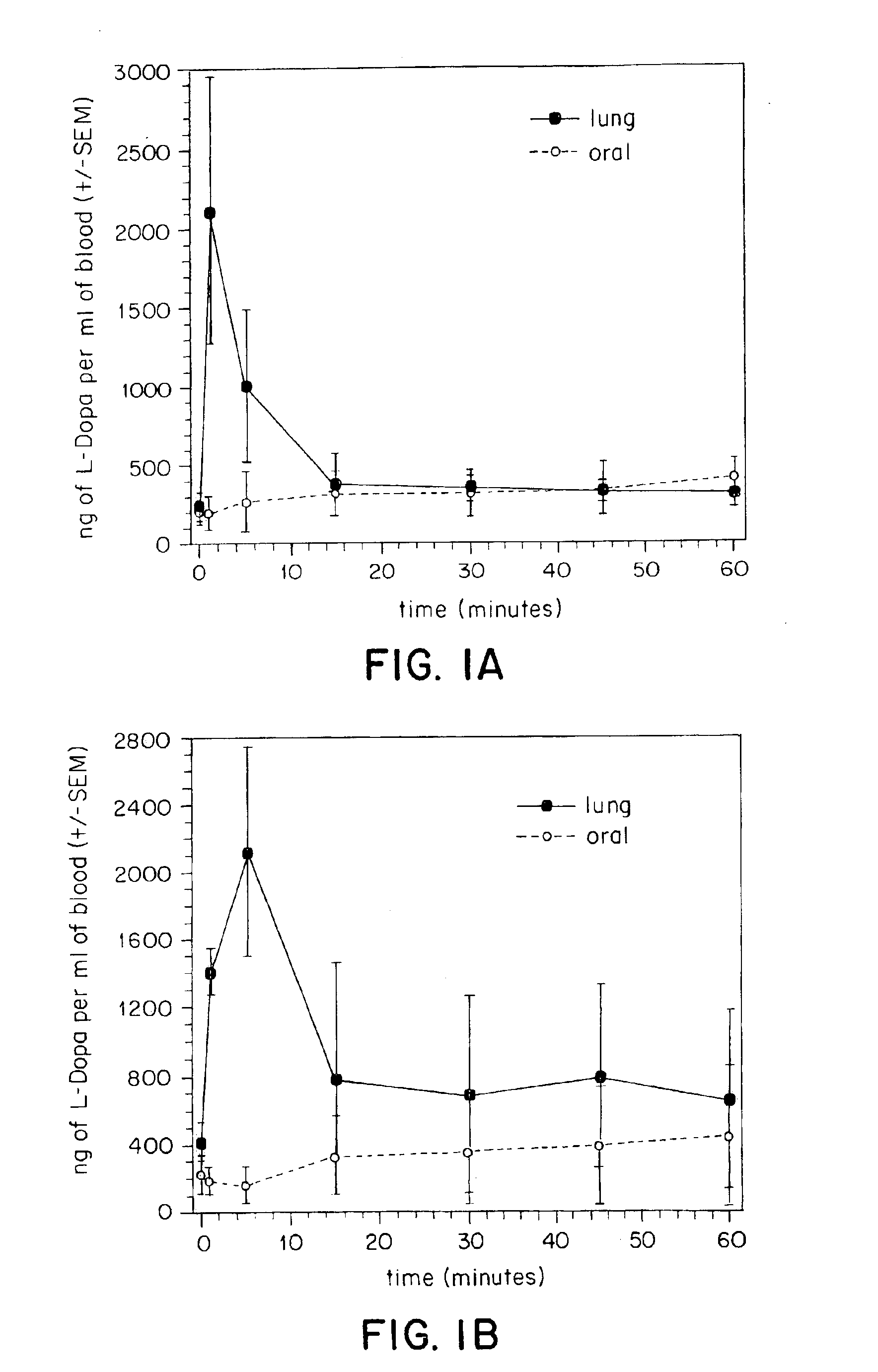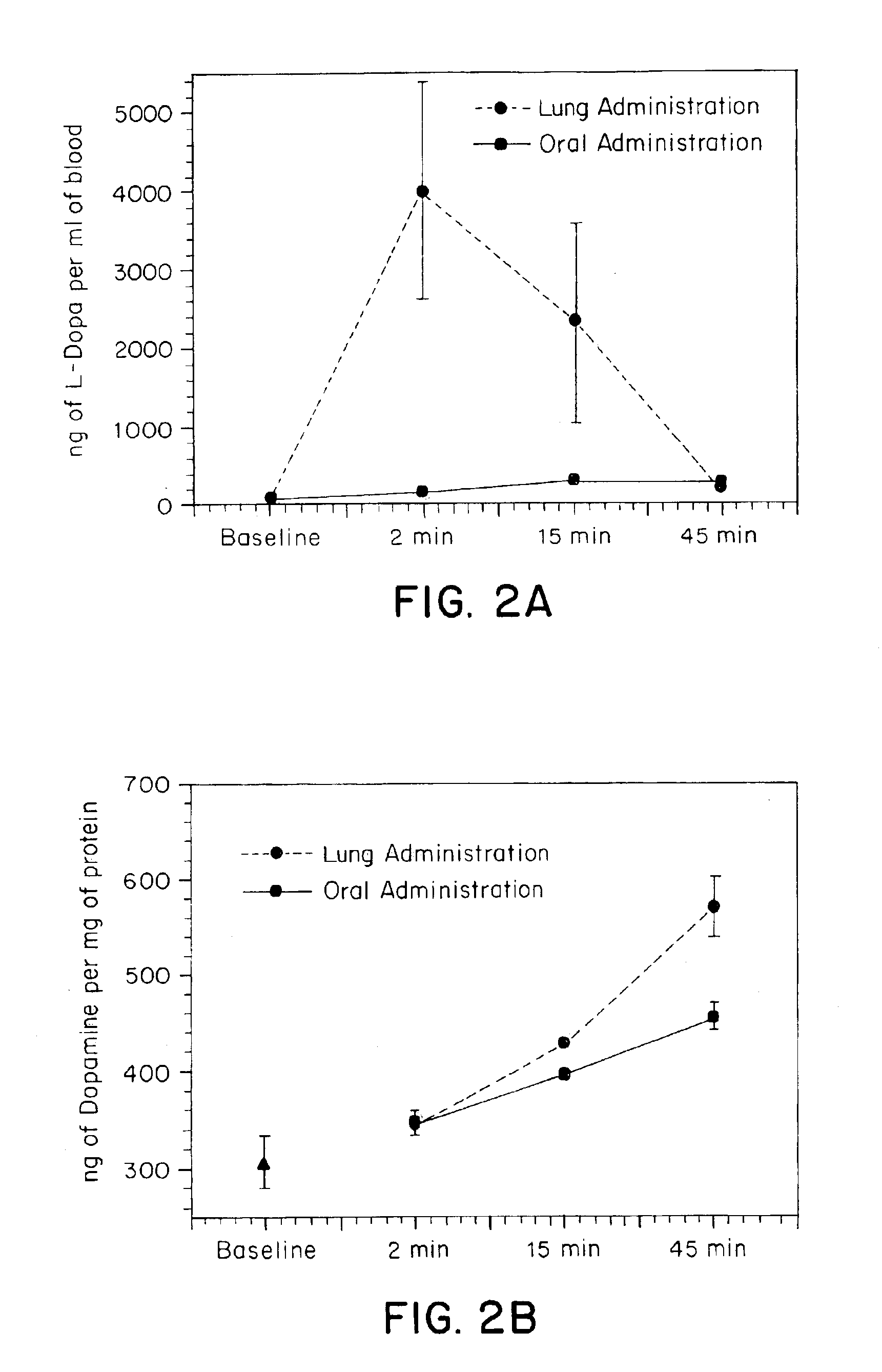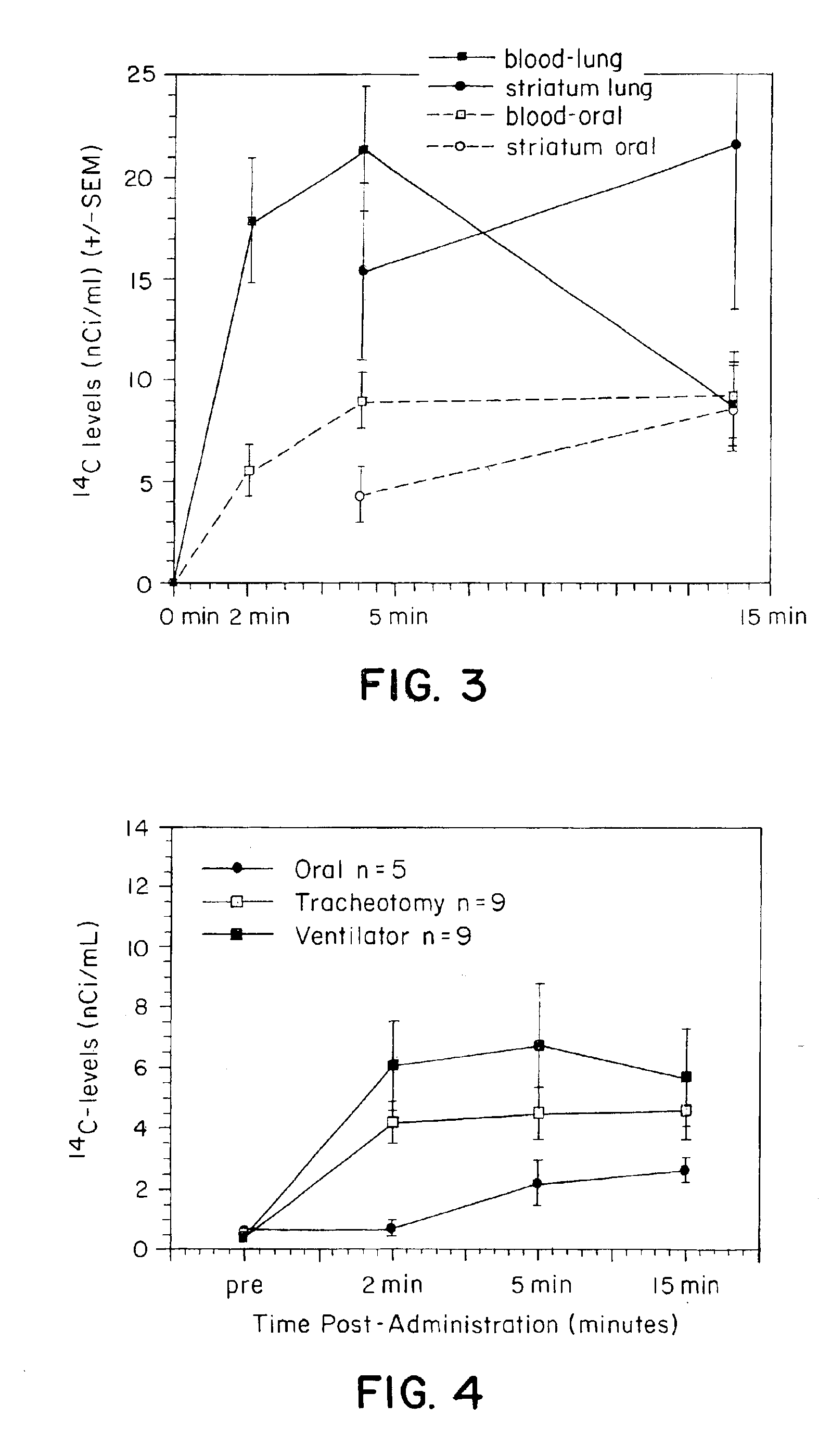Pulmonary delivery in treating disorders of the central nervous system
- Summary
- Abstract
- Description
- Claims
- Application Information
AI Technical Summary
Benefits of technology
Problems solved by technology
Method used
Image
Examples
example 1
[0146]In vivo tests were performed to compare oral and tracheal administration of L-Dopa in a rat model. Animals received an IP injection of the peripheral decarboxylase inhibitor carbidopa (Sigma, St. Louis, Mo.) (200 mg / kg) one hour prior to administration of L-Dopa. Under ketamine anesthesia, the animals were divided into two groups. In the first group of animals (N=4), L-Dopa (8 mg) was suspended in saline containing 2% methylcellulose and given via oral gavage. In the second group (N=5) a small tracheotomy was performed to permit placement of a pipette tip with a modified 2 mm opening through the trachea and into the lungs. The pipette tip was pre-loaded with powdered L-Dopa (8 mg) and was interfaced with an oxygen tank using silicone tubing. Coinciding with the respiratory cycle of the animal, L-Dopa was pushed into the lungs using a burst of oxygen (5 liters / minute). Blood samples (200 μl) were withdrawn from a previously placed femoral cannula at the following time points: 0...
example 2
[0153]Blood, brain and peripheral organ levels of 14C were determined following administration of 14C—Carboplatin via either IV or pulmonary administration. A total of 100 μCi of radiolabeled carboplatin was mixed with unlabelled carboplatin to provide a total drug concentration of 8 mg / rat. All animals were anesthetized using ketamine. For IV administration, carboplatin was administered via a previously placed femoral cannula. For pulmonary administration, a 24 gauge catheter was placed within the trachea and the carboplatin was administered using a Harvard ventilator over a 3-5 second period using a tidal volume of 1 ml and 100 strokes / minutes. Blood samples were taken at 10 minutes post drug administration (N=6 per time point for each group). Brains were removed and dissected into various regions including the olfactory, frontal, and occipital cortices, the hippocampus, striatum, and cerebellum. Peripheral organs included the kidneys, spleen, heart, testes, and muscle. All sample...
example 3
[0156]Particles comprising L-Dopa and suitable for inhalation were produced as follows. 2.00123 g DPPC (Avanti Polar Lipids, Lot #G160PC-25) was added to 2.80 L of ethanol and stirred to dissolve. 0.0817 g L-Dopa (Spectrum, Lot 0Q0128, Laguna Hills, Calif.), 0.9135 g Sodium Citrate (Dehydrate) (Spectrum Lot NX0195), and 0.5283 g Calcium Chloride (Dehydrate) (Spectrum Lot NT0183) were added to 1.2 L of water and dissolved. The solutions were combined by adding the water solution to the ethanol solution and then the solutions were allowed to stir until the solution was clear. The weight percent of the formulation was approximately: 20% L-Dopa, 50% DPPC, 20% Sodium Citrate, 10% Calcium Chloride.
[0157]The final solution was then spray dried in a Niro dryer (Niro, Inc., Columbus, MD) using a rotary atomizer and nitrogen drying gas following the direction of the manufacturer, using the following spray conditions: Tinlet=120° C., Toutlet=54° C., feed rate=65 ml / min, heat nitrogen=38 mm H2O...
PUM
| Property | Measurement | Unit |
|---|---|---|
| Percent by mass | aaaaa | aaaaa |
| Percent by mass | aaaaa | aaaaa |
| Percent by mass | aaaaa | aaaaa |
Abstract
Description
Claims
Application Information
 Login to View More
Login to View More - R&D
- Intellectual Property
- Life Sciences
- Materials
- Tech Scout
- Unparalleled Data Quality
- Higher Quality Content
- 60% Fewer Hallucinations
Browse by: Latest US Patents, China's latest patents, Technical Efficacy Thesaurus, Application Domain, Technology Topic, Popular Technical Reports.
© 2025 PatSnap. All rights reserved.Legal|Privacy policy|Modern Slavery Act Transparency Statement|Sitemap|About US| Contact US: help@patsnap.com



